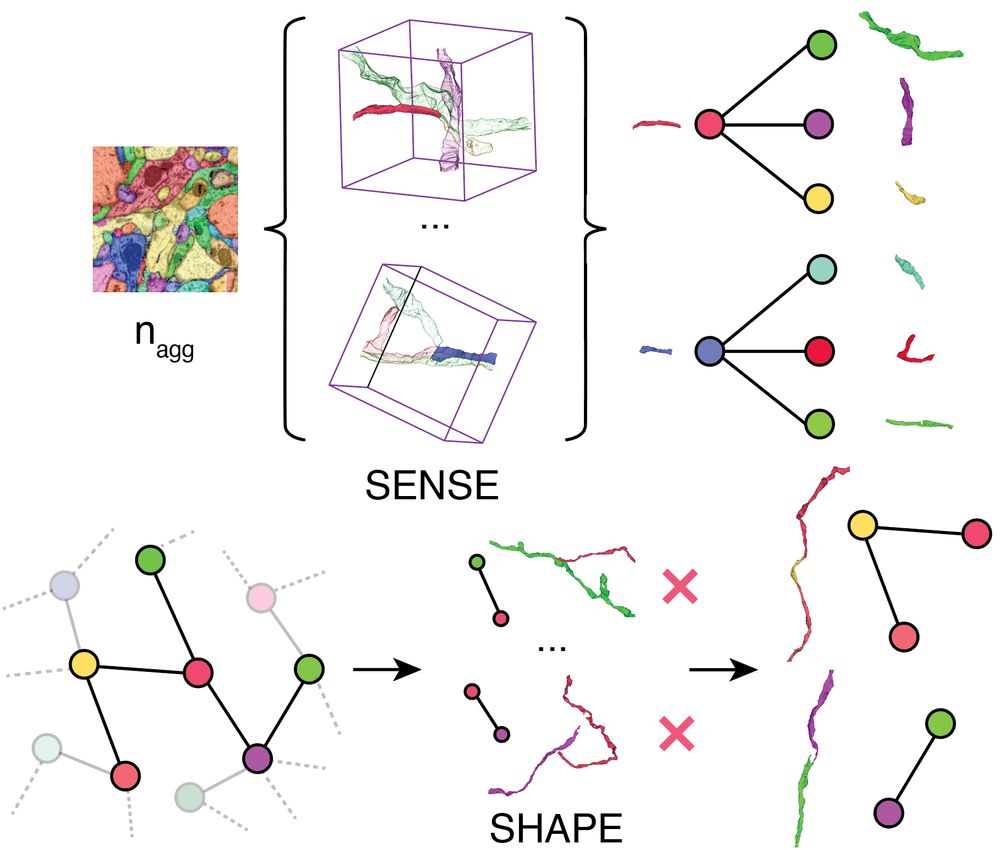Michał Januszewski
@michalwj.bsky.social
connectomics @ Google Research
We find an OOM reduction in splits while maintaining mergers low enough that the traced axons should be useful for automated analysis or serve as an excellent starting point for further manual corrections.

May 22, 2025 at 11:42 AM
We find an OOM reduction in splits while maintaining mergers low enough that the traced axons should be useful for automated analysis or serve as an excellent starting point for further manual corrections.
We focus on the most challenging type of reconstruction (axon tracing) and evaluate PATHFINDER on a scale that ensures statistical significance and lack of bias (over 4 m total path length, all axons in the volume).

May 22, 2025 at 11:42 AM
We focus on the most challenging type of reconstruction (axon tracing) and evaluate PATHFINDER on a scale that ensures statistical significance and lack of bias (over 4 m total path length, all axons in the volume).
FFN v1.5 segments the volume EM images. Then SENSE defines the agglomeration space. Finally, SHAPE guides an efficient combinatorial search for optimal, morphologically plausible reconstructions.

May 22, 2025 at 11:42 AM
FFN v1.5 segments the volume EM images. Then SENSE defines the agglomeration space. Finally, SHAPE guides an efficient combinatorial search for optimal, morphologically plausible reconstructions.
PATHFINDER is an AI system designed to address this. It uses specialized models (FFN v1.5, SENSE, SHAPE) to process data across progressively larger spatial scales, currently up to the range of tens of microns.

May 22, 2025 at 11:42 AM
PATHFINDER is an AI system designed to address this. It uses specialized models (FFN v1.5, SENSE, SHAPE) to process data across progressively larger spatial scales, currently up to the range of tens of microns.
Wouldn't it be great if we could not only image large connectomic volumes but also completely reconstruct them? And if a whole mouse brain project didn't cost billions?
With the PATHFINDER preprint (www.biorxiv.org/content/10.1...), we preview a future where it doesn't have to.
With the PATHFINDER preprint (www.biorxiv.org/content/10.1...), we preview a future where it doesn't have to.

May 22, 2025 at 11:42 AM
Wouldn't it be great if we could not only image large connectomic volumes but also completely reconstruct them? And if a whole mouse brain project didn't cost billions?
With the PATHFINDER preprint (www.biorxiv.org/content/10.1...), we preview a future where it doesn't have to.
With the PATHFINDER preprint (www.biorxiv.org/content/10.1...), we preview a future where it doesn't have to.

